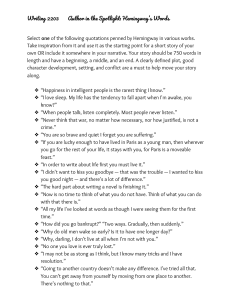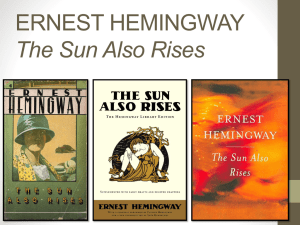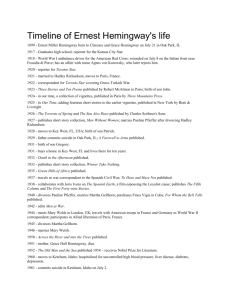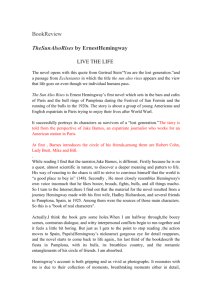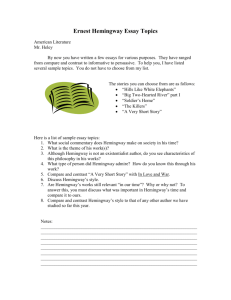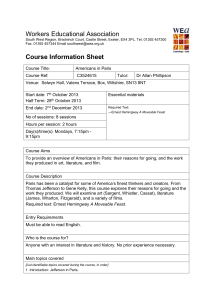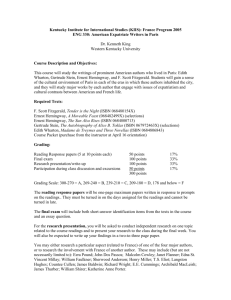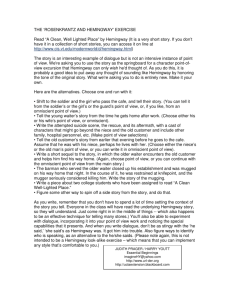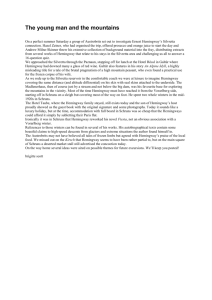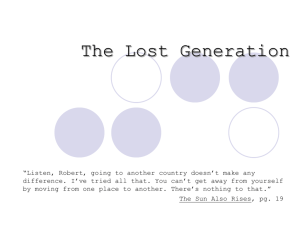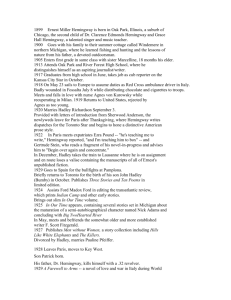THE SUN ALSO RISES
advertisement
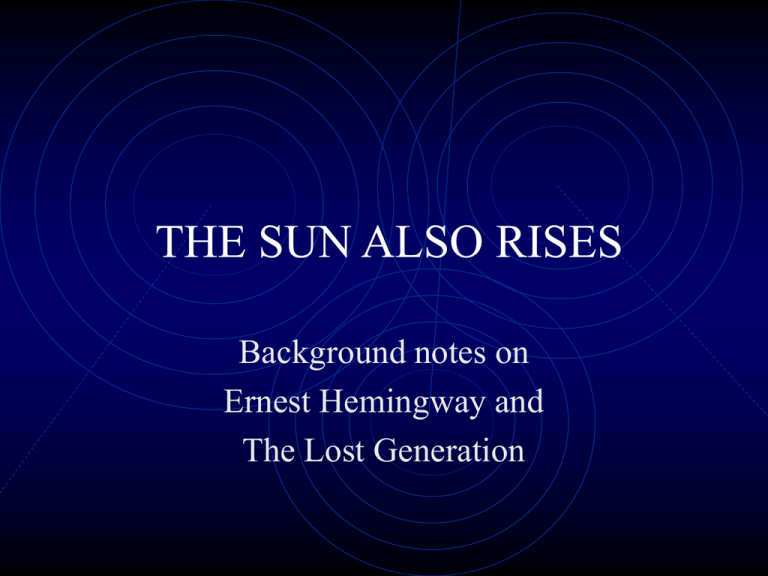
THE SUN ALSO RISES Background notes on Ernest Hemingway and The Lost Generation BACKGROUND ON HEMINGWAY • Ernest Hemingway, a giant of American literature, won the Nobel Prize for Literature in 1954. • Major works are The Sun Also Rises (1926), A Farewell to Arms (1929), For Whom the Bell Tolls (1940), and The Old Man and the Sea (1952). ICEBERG METAPHOR • Hemingway’s writing seems very simple, but he writes using the “Iceberg Theory” (understatement). • With an iceberg, 7/8th’s of the iceberg is beneath the surface; this is analogous to Hemingway’s prose, where there is just a little bit above the surface-most of the meaning is beneath the surface. THE LOST GENERATION • Gertrude Stein, a writer who ran a literary “salon” in Paris in the 1920’s, said to Hemingway, “All you people who served in the war, you are all a lost generation.” Originally this term referred to all the young men who died in WWI, but Stein used it to refer to the writers and artists who lived in Paris after the war. They were “lost” in that they eschewed traditional lives. LOST GENERATION continued • Violently affected by the carnage of WWI and disillusioned with their society’s values characterized by greed, materialism and provincialism (such as prohibition),these expatriate American writers and artists fled to Paris where they could pursue their art and live a bohemian lifestyle, which meant living life in the fast lane (parties, drinking, relationships, travel). American Expatriates in Paris • F. Scott Fitzgerald (The Great Gatsby) and his wife, Zelda, like Hemingway, were among the writers and artists who hung out in Paris in the 1920’s. Dominant Belief of the Expatriates • After suffering so from the horror that was WWI, the expatriates embraced a philosophy of carpe diem (live life to its fullest now), for after death is death. The converse of carpe diem is “memento mori,” which means remember death and repent (Calvinistic idea). MAJOR CHARACTERS IN THE NOVEL Jake Barnes— • the main character • is an American journalist living in post-war Paris • likes to drink, fish, watch the bullfights • Was wounded in the war on the Italian front • Is deeply in love with Lady Brett Ashley Robert Cohn— • is a sometime writer • plays tennis • former Princeton boy who boxed in college • is a bit of an outsider in his crowd because he’s Jewish • is a dilettante (likes to dabble in different things) • at the beginning of the novel, he is seeing Frances. MAJOR CHARACTERS CONT. Frances— • is a strong-willed American woman • speaks fluent French • is having an affair at the beginning of the novel with Robert Cohn Brett Ashley— • a drop-dead gorgeous Englishwoman • has a history with Jake • was a nurse in the war • is unconventional (likes to drink, party, flirt, have fun) HEMINGWAY’S CODE • The Hemingway hero has to adhere to a strict code, • • • • • • • including: self-discipline being able to hold one’s liquor always being in control of oneself and able to handle any situation belief that action matters, not talk belief that work/skill is what matters loyalty to a small group of friends (not country or God) enjoying the small things in life THE THREE SECTIONS OF THE SUN ALSO RISES • The Paris section, which is a series of loosely linked stories Three Sections continued • The fishing trip in northern Spain (is an escape from the city and from women and represents a sort of Edenic paradise). Three Sections finis Fiesta at Pamplona,Spain • An aficionado of bullfighting, Hemingway saw the bullfights as representing man’s struggle against death The End
